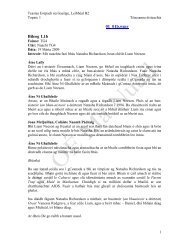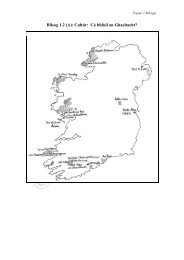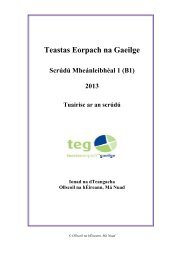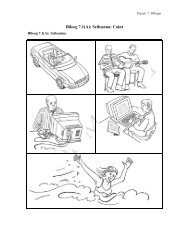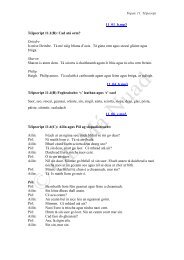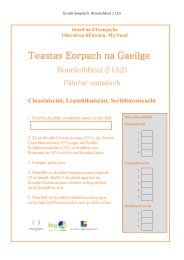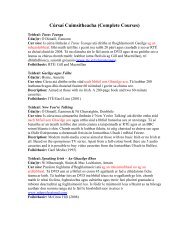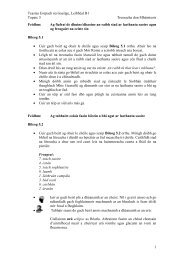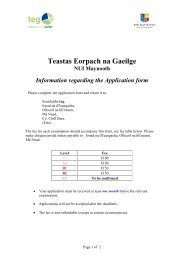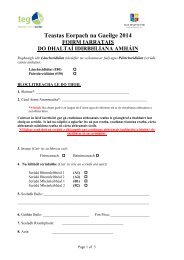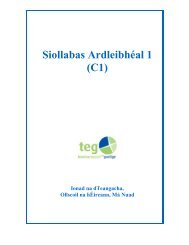You also want an ePaper? Increase the reach of your titles
YUMPU automatically turns print PDFs into web optimized ePapers that Google loves.
Syllabus A2<br />
preparation of class lessons. For example, what are the learners’ pastimes, what<br />
type of work do they do, where do they live, what are their skills, what subjectmatter<br />
would they like to cover in the class and so on. With such information to<br />
hand, class lessons can take into account the needs and interests of the learners.<br />
• Teachers can adapt the content of the syllabus as best suits the course of<br />
instruction they put together. That is to say, it is not necessary to stick to the<br />
order or layout of the units as given in the syllabus. However, it is important to<br />
cover the various functions and the examples of phrases/vocabulary.<br />
• In this syllabus, it is presumed that teachers will adapt the phrases to the norms<br />
of their own dialect. For example, in the Ulster dialect for the sentence ‘I’m<br />
sorry I’m late’ one would normally say ‘Tá mé buartha go bhfuil mé mall’ but<br />
‘Tá brón orm go bhfuil mé déanach’ is what is said in other dialects. It is<br />
expected at this level that learners will be comfortable in using whatever version<br />
prevails in their own dialect and that they would understand whatever are the<br />
principal versions used in the other dialects. Likewise, in relation to other<br />
aspects of vocabulary (for example ‘druid’/‘dún’) and of grammar (for example,<br />
‘ar an bhóthar’/’ar an mbóthar’), it suffices at this level that learners can use<br />
one version correctly and understand the other versions.<br />
3. Grammar<br />
• One of the distinctive features of a communicative syllabus is the way in which<br />
grammar is presented. In traditional syllabi, grammar was given pride of place.<br />
In a communicative syllabus, however, points of grammar are taught within the<br />
context of the subject-matter and the topics. For example, in <strong>Topic</strong> 11 (Planning<br />
Holidays), periods of time are referred to: ‘Bhí mé sa Spáinn ar feadh coicíse’/’I<br />
was on holidays in Spain for a fortnight’. The examples of ‘ar feadh<br />
seachtaine‘/for a week’, ‘ar feadh coicíse’/’for a fortnight’ and ‘ar feadh<br />
míosa’/‘for a month’ are given and it is explained that ‘ar feadh’ is followed by<br />
the genitive case and that is the reason why ‘seachtain’ changes to ‘seachtaine’.<br />
We do not advise that the learners are introduced to every other rule relating to<br />
the genitive case at this point. It is sufficient at this level that learners<br />
understand what it is and why a change occurs after ‘ar feadh’. Certainly,<br />
central points of grammar should not be overlooked and it is often useful to<br />
focus on a particular point of grammar in a formal way.<br />
4. The learners and the language learning process<br />
• Much of what is mentioned below is mentioned in Syllabus A1 and it is<br />
mentioned here to remind teachers that knowledge of language stra<strong>teg</strong>ies and<br />
language awareness is central to any course of instruction.<br />
© National University of Ireland, Maynooth 4



